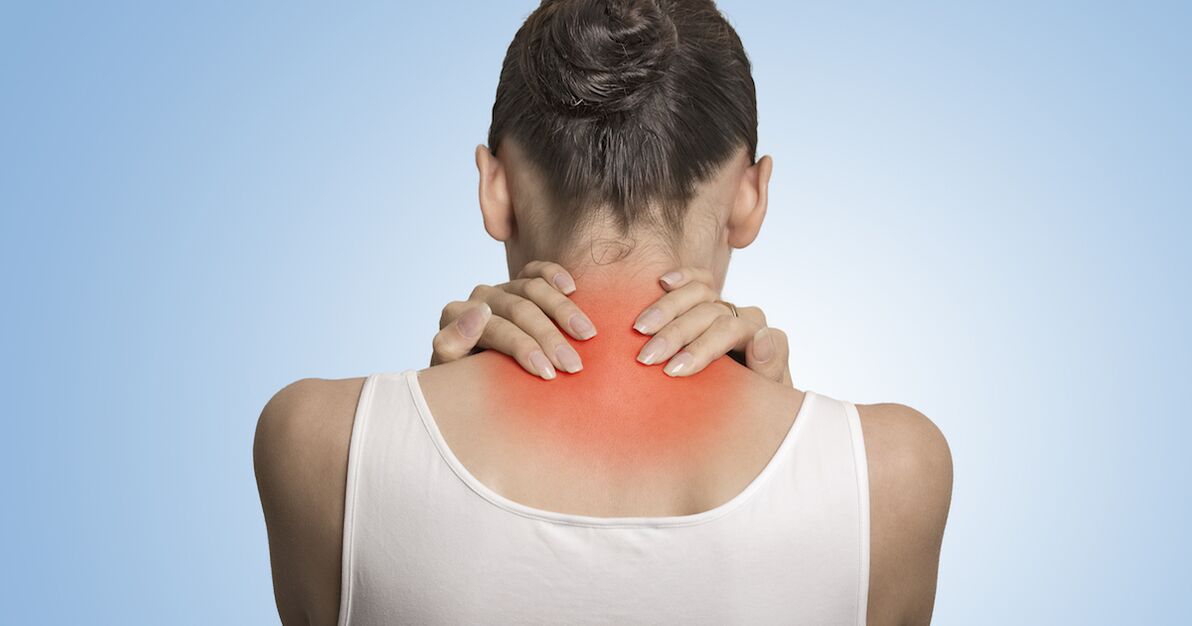
A modern sedentary lifestyle is the reason why such a common disease as cervical osteochondrosis becomes actively youthful. "IT people", drivers and other representatives of the "sedentary" professions are increasingly complaining about him. According to doctors, even 17-year-old teenagers complain of osteochondrosis of the cervix. As a rule, these are the ones who actively use a smartphone.
The fact is that depending on the slope over the gadget, the human spine faces a load of 12 to 27 kg. The more time a person spends in this position, the faster the intervertebral discs wear out, neck and back pain appear and then osteochondrosis. Doctors strongly recommend starting treatment as soon as the first symptoms appear, otherwise the consequences of neglecting one's health may be irreversible.
What is this disease - cervical osteochondrosis?
The most mobile of all parts of the spine is the cervix. It has seven vertebrae connected by elastic intervertebral discs. Each disk has a fibrous ring with a pulp core inside.
A metabolic disorder in it may indicate the onset of osteochondrosis, in which the intervertebral disc loses its strength and elasticity. In the future, under the influence of loads, the fibrous ring protrudes, cracks appear in it.
The cervical region has many nerve channels and blood vessels to supply food to the brain and the vertebrae are closely adjacent to each other. Thus, even a moderate deformity of one of the vertebrae leads to the fact that the nerve structures and blood vessels are compressed.
What are the symptoms of cervical osteochondrosis and what is their risk?
The first signs of the disease are manifested in the form of tension and tingling in the muscles of the neck, pain that can be transmitted to the back of the head, shoulders and arms. When the cerebral circulation is disturbed due to osteochondrosis, migraines, phytovascular diseases and hypertension occur. Also, the disease has a bad effect on the cardiovascular and respiratory system, general coordination, hearing and vision deteriorate.
If treatment is not started early, cervical osteochondrosis can cause intervertebral disc herniation, hernia, and vertebral artery syndrome.
Diagnosis of cervical osteochondrosis
The diagnosis and treatment of osteochondrosis of the cervical spine is performed by highly specialized specialists - orthopedic traumatologists and neurologists specializing in the field of spine. First of all, the doctor determines the severity of the symptoms of the disease. Possible causes of occurrence are also identified - harmful working conditions, patient habits, presence of injuries.
If necessary, an additional examination is recommended for the patient:
- X-ray shows the degree of instability of the cervical vertebrae.
- MRI can detect the formation of protrusions, disc herniation and soft tissue condition.
- Dopplerography of the vessels of the head and cervical region is recommended for cerebrovascular accidents, migraines. This test allows you to determine the condition of the vertebral arteries, veins, as well as the presence of pathological distortions and vascular loops. Ultrasound also allows you to see violations of the patency of blood vessels. Together, all these tests allow you to see the overall picture of the condition of the cervical spine in order to properly diagnose and prescribe the most effective treatment and further rehabilitation to ensure a long-term result.
Features of the treatment of osteochondrosis of the cervical spine
The treatment aims to improve the blood supply to the brain and the tissues surrounding the cervical spine, increase the mobility of the blocked parts of the cervical spine and reduce pain and myotonic syndrome.
To achieve these goals, various methods are used:
- Massage in combination with light orthopedic corrections to improve blood flow to the cervical spine.
- Short lever method for spine correction. This non-traumatic method allows you to effectively remove the functional blocks and restore the mobility of the part.
- Shock wave therapy to improve metabolic processes, rejuvenate cells and affected areas of tissue and eliminate muscle spasms.
- Carboxytherapy (therapeutic effect of carbon dioxide on the tissues of the spine and joints).
- Physiotherapy treatment methods (electrotherapy and magnetotherapy).
- Drug treatment (blockages, multidrug and other injections) in combination with the above methods. The drugs are used only in certain cases, to relieve an acute condition with myotonic (soft tissue swelling) and pain syndrome.
Exercise therapy for osteochondrosis of the cervical spine
In the treatment of diseases, physiotherapy exercises are becoming more and more popular. It is used not only in a state of depression, but also as a prevention of osteochondrosis of the cervix. Exercise improves blood circulation, strengthens the muscular corset, eliminates restrictions on the mobility of the vertebrae, increases the range of motion and allows you to restore neuromuscular connections.
Effective results are achieved with treatment according to the Finnish-German method David, which is performed at the Institute of Spine and Rehabilitation. During complex computer tests, the vulnerability of the cervical spine, the muscular asymmetry in the cervical region, the dominance or lack of development of the muscular system are determined. Based on these indicators, the potential load is calculated and an individual training program is developed in innovative medical simulators. For treatment and consolidation of the result, a course of 24 sessions should be taken twice a year. The results of training in simulators are usually visible after 5-6 sessions.
Self-medication is not an option
The signs of cervical osteochondrosis are often ignored or self-healing. Meanwhile, it can lead to serious complications. A person is especially at risk in the case of self-medication or the use of traumatic manual techniques and physical manipulations, which not only do not cure, but can even worsen the disease. It is best to entrust the treatment of cervical osteochondrosis to specialized specialists who will choose for you mild, modern and effective methods that exclude the possibility of injury to the affected cervical spine.













































